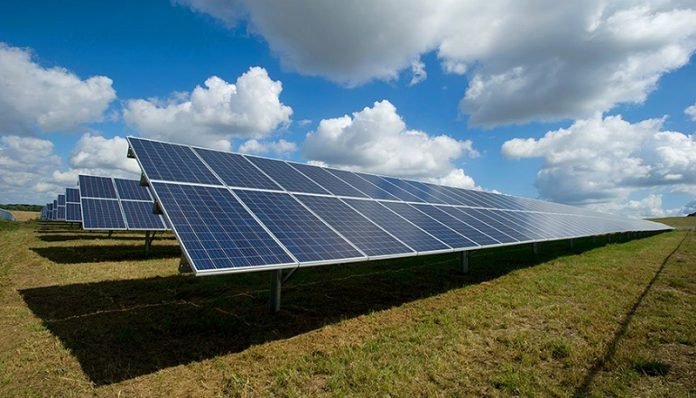
Solar cell efficiency can improve by using metal nanowire meshes that provide high transmissivity and high electrical connectivity, says new study.
Transparent electrodes are a critical component of solar cells and electronic displays.
To collect electricity in a solar cell or inject electricity for a display, you need a conductive contact, like a metal, but you also need to be able to let light in (for solar cells) or out (for displays).
Metal is opaque, so the current techniques use metal oxides, most often indium tin oxide — a near-critical rare earth metal — as the conductive contact.
Because supplies of this rare earth metal are limited, Lawrence Livermore National Laboratory (LLNL) researchers have turned to ordered metal nanowire meshes that provide high transmissivity (due to the small diameters of the nanowires), high electrical connectivity (due to the many contact points in the mesh) and use more common elements.
The research appears in the journal Soft Matter.
The nanowire arrays also have applications for optical metamaterials — composite materials usually made of metals and dielectrics — that have unique optical properties not found in nature.
For example, all naturally occurring materials have a positive index of refraction.
But metamaterials can be designed to have a negative index of refraction, which means that light passing through this material would go in the opposite direction from what one would normally see, and can create structures like cloaking devices and perfect lenses.
Because the structure of optical metamaterials must be smaller than the wavelength at which they function, fabricating optical metamaterials operating at visible wavelengths requires features on the order of 100 nanometers or smaller.
“We’ve demonstrated a scalable method to create metallic nanowire arrays and meshes over square-centimeter-areas with tunable sub-100 nanometer dimensions and geometries,” said LLNL materials scientist Anna Hiszpanski, principal investigator of the project.
“We were able to attain comparable or smaller dimensions than what the traditional nanofab techniques can produce and do it over a significantly larger area relevant for real-world applications.”
For transparent electrode applications, having such small metal nanowire meshes is important because their small nanometer-size diameter enables more light to pass through while the ordered nature of the arrays/meshes increases the number of electrical contacts between nanowires, increasing conductivity.
“Ordering nanowires to increase the number of electrical interconnections between wires is highly desirable but difficult to do,” Hiszpanski said.
“Building on the self-assembly behavior of block co-polymers that other groups have demonstrated, we have met this challenge and created ordered metal nanowire meshes.
The very simple bottom-up approach we used to fabricate these ordered nanowires meshes is inherently scalable to device-relevant areas.”
A common sample size area using these traditional nanofabrication techniques for metamaterials is 100 microns (squared), but the team was able to create nanopatterns with more than centimeter (squared) areas – areas more than six orders of magnitude larger.
“To begin to use these metamaterials beyond the lab and in applications, fabrication over larger areas is a necessity,” said LLNL materials scientist Yong Han, a co-author of the paper.
The next step is to increase the conductivity of the metal nanowire mesh.
Other LLNL co-authors include lead author Timothy Yee, John Roehling and former LLNL scientist Carla Watson, currently at the University of Rochester.
The work was funded by LLNL’s Laboratory Directed Research and Development program.
Written by Anne M Stark.



